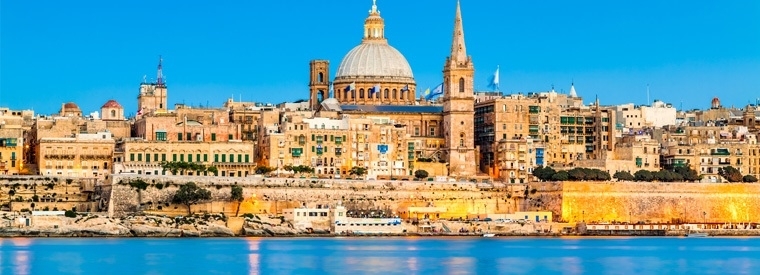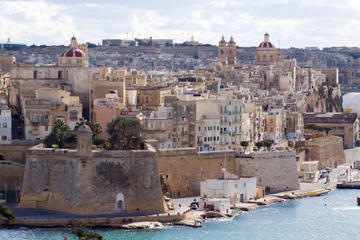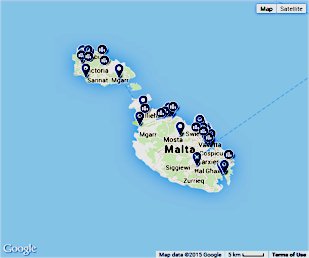« MALTA • Destination Malta
Discover magical Malta

The strategically-located islands of Malta have been ruled and fought over by various powers over the centuries. Contrary to popular belief amongst its inhabitants, the south of Malta is not Europe's most southern point, ranking fourth to Gibraltar, Cyprus and Greece.
A | B | C | D | E | F | G | H | I | J | K | L | M | N | O | P | Q | R | S | T | U | V | W | X | Y | Z
» Birgu (Vittoriosa)
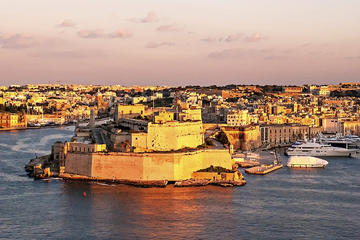
An interesting town to visit on Malta is known in Maltese as Birgu, and in Italian as Vittoriosa ("Victorious," named as such after the Great Siege of Malta). Situated on the Grand Harbor, it has a lengthy maritime history and home to the popular Maritime Museum. But the Fort St. Angelo is the real draw here, an unrestored fortress that is largely credited with helping Malta beat back invaders. Other highlights include the Church Museum …
» Blue Grotto
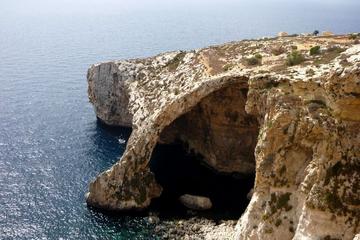
When in Malta, it is practically de rigueur to hop aboard a tour boat and explore the sea caves at Wied iz-Zurrieq on the island’s south-west coast. By far the most famous of the island’s cave complexes is the Blue Grotto, a series of nine caves whose rocky sides glow green, purple, and orange according to their mineral content. The sea around the caves is so clear that the apparent bright cobalt-blue of the water is actually a reflection of the sky reflected off the pristine white sand on the sea floor …
» Cospicua
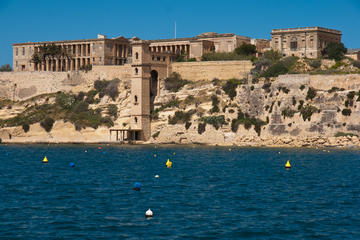
Cospicua, known in Maltese as Bormla, is one of the beautiful villages that makes up the Three Cities (Cottonera). With Greek, Roman, and Turkish influences, it's a fascinating look at just how integrated Mediterranean history has made such a unique culture. When seen from the sea, as Cospicua should be at least once, visitors are looking at a port that dates back to the Phoenician era – although it was not declared an actual city in the early 18th century, when the dockyards were built …
» Ggantija Temples
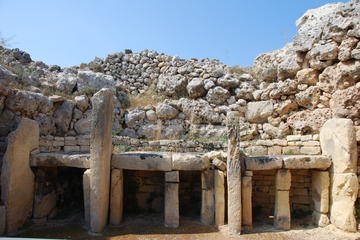
Built about 5,600 years ago on the island of Gozo, the Ggantija Temples are one of the most popular destinations for visitors – and one of the world's oldest manmade religious sites still in existence today. They are astonishing not only for their age, but also because they were constructed at a time when neither metal tools nor the wheel had yet been known on the island. Just one of seven megalithic temples on Gozo and Malta, they were excavated in the early 19th century based on local knowledge of the site based on folklore …
» Gozo
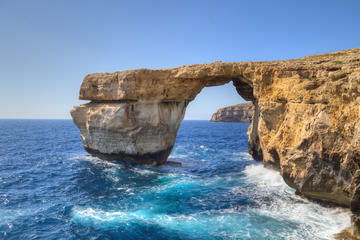
Tiny Gozo is 9.25 miles by 4.25 miles (15 km by 7 km) at its widest point and lies north of Malta. Unlike its big sister Malta, Gozo has opted for the quiet life. The island's capital, Victoria (or Rabat) is the epicenter of the island, with all roads leading from there. It-Tokk, the town’s charming central square, is where locals and visitors alike meet up in pretty cafés and shop for local lace and knitwear at the daily morning market. Around the corner is the Citadel, a miniature walled fortress town with impregnable walls and bastions …
» Grand Master's Palace
After their eventual triumph in the Great Siege of Malta in 1565, the Knights of St John, the quasi-military force who repelled the Turkish invaders, became the toast of a grateful Europe. The fortress of the magnificent Grand Master's Palace in Valletta reflects their heroic standing and celebrates the wealth lavished upon them. It was to become the home of the supreme head of the Knights of St John and was constructed by Gerolamo Cassar, the Maltese architect who worked on the grid-like construction of the city of Valletta …
» Malta Maritime Museum
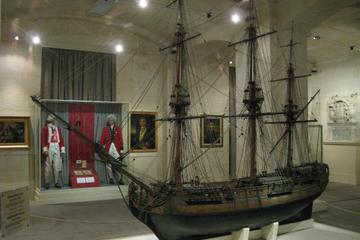
Housed in a formal naval bakery in Vittoriosa, the Malta Maritime Museum is yet one more example of how proud the country is of their history – this time, with the focus being the seas surrounding the island. And because there is an ongoing search for more artifacts, it's a site that's worth revisiting on subsequent trips. From the largest Roman anchor in the world to Napoleonic battleship parts to more than 60 traditional Maltese boats, this 20,000+ collection not only exhibits Maltese Maritime history …
» Marsamxett
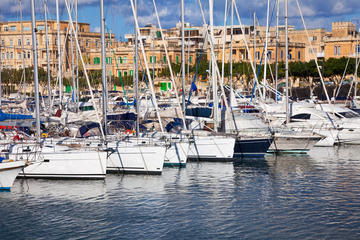
Marsamxett Harbour sits on the north-west side of Valletta and, along with a series of major creeks – Sliema, Msida and Lazzaretto – provides calm mooring for boats as it is protected by the plug of land at Dragutt Point and by rocky Manoel Island, now connected to the town of Gzira by bridge. Marsamxett is separated from the Grand Harbour by the Valletta peninsula but together the two inlets make up the biggest natural harbor in Europe. The towns of Sliema, Gzira, Ta’xbiex and Msida sprawl into each other along the northern edge of the harbor …
» Marsaxlokk
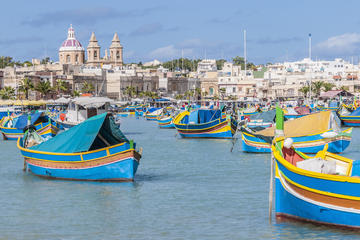
Malta’s prettiest fishing village sits around a bay on the south coast of the island and has starred in thousands of postcards and many a film. Marsaxlokk’s (pronounced marsa-schlock) chief attractions are twofold: the buzzing daily market and the fishing boats. The latter comprises a large fleet of luzzus (pronounced ‘lut-sues’) bobbing in the bay. These traditional, cheerily painted and wooden Phoenician-style fishing boats have become symbolic of the island – most of them are red, yellow and sky-blue, with eyes painted on their prows to ward off evil …
» Mdina
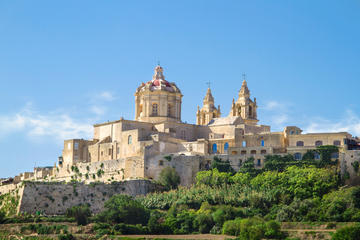
The tiny walled, hilltop settlement of Mdina traces its history back 4,000 years and it was just outside the city that St Paul took refuge in a cave when he was shipwrecked on Malta in 60 AD. The town was once Malta’s capital and is crammed with glorious golden-stoned mansions built for the aristocracy in the 15th and 16th centuries. Chief among these is the grand Palazzo Falson, with a series of elegant rooms clustered around a central courtyard in typical medieval Spanish style and a charming little museum full of eccentric bygones …
» Mosta Dome
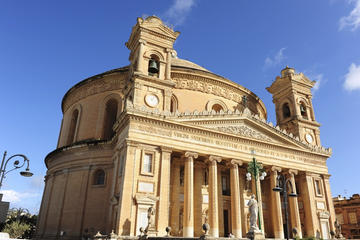
Malta is famous for the lavish scale of its many scores of churches (there are 25 in Valletta alone) but Mosta’s Neo-classical parish church of St Mary stands out even among all this grandeur. Its eponymous, self-supporting dome measures 121 ft (37 m) in diameter and is 220 ft (67 m) high – bigger than St Paul’s in London – with every inch of the interior covered in gilt, frescoes and marble flooring. The church was designed by Maltese architect Giorgio Grognet de Vassé in the style of the Pantheon in Rome but built by solely by local parishioners …
» Msida Marina
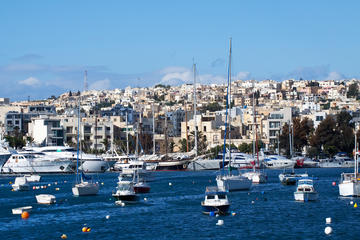
Msida town was originally a little fishing village but now straggles into smart Ta’xbiex, the wealthy enclave that is home to the majority of Malta’s diplomats and embassies. Msida’s biggest claims to fame today are a prestigious university and the mammoth yacht marina stretching along the north side of Marsamxett Harbour right up Msida Creek. It is Malta’s biggest and most sheltered harbor and the place to head to see the sleek super-yachts of the super-wealthy Euro-glitterarti …
Page 1 • Page 2
« MALTA • Destination Malta


